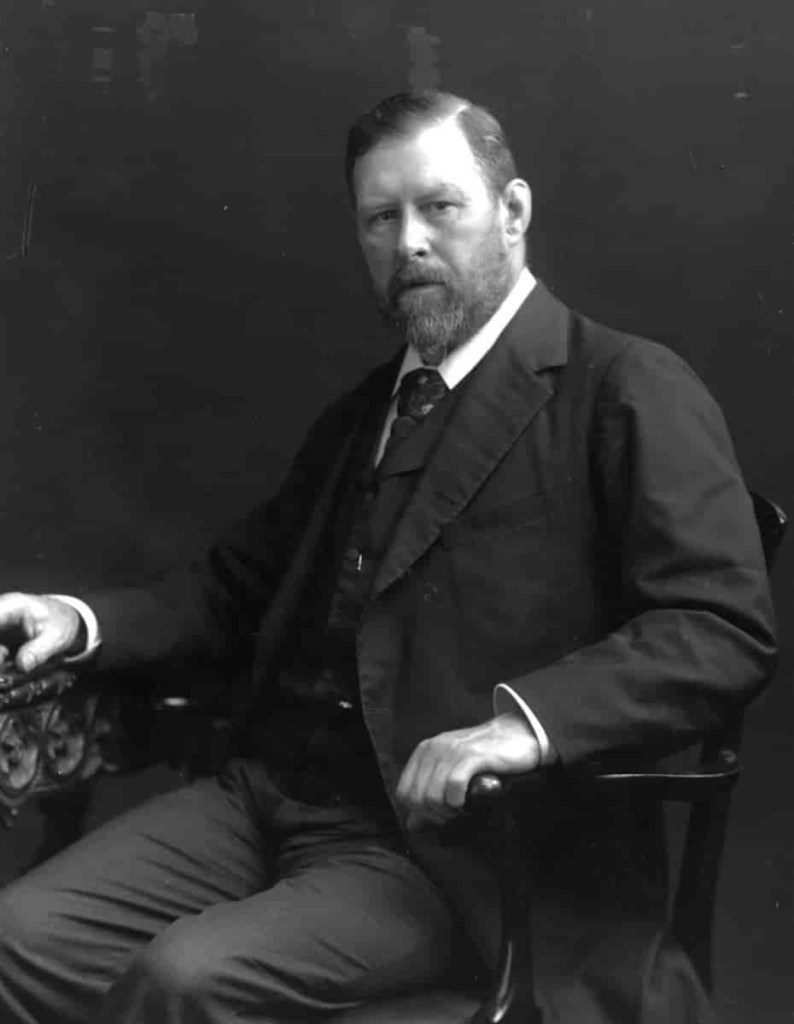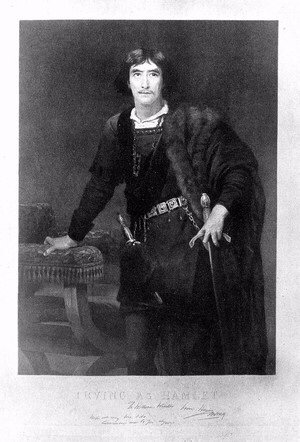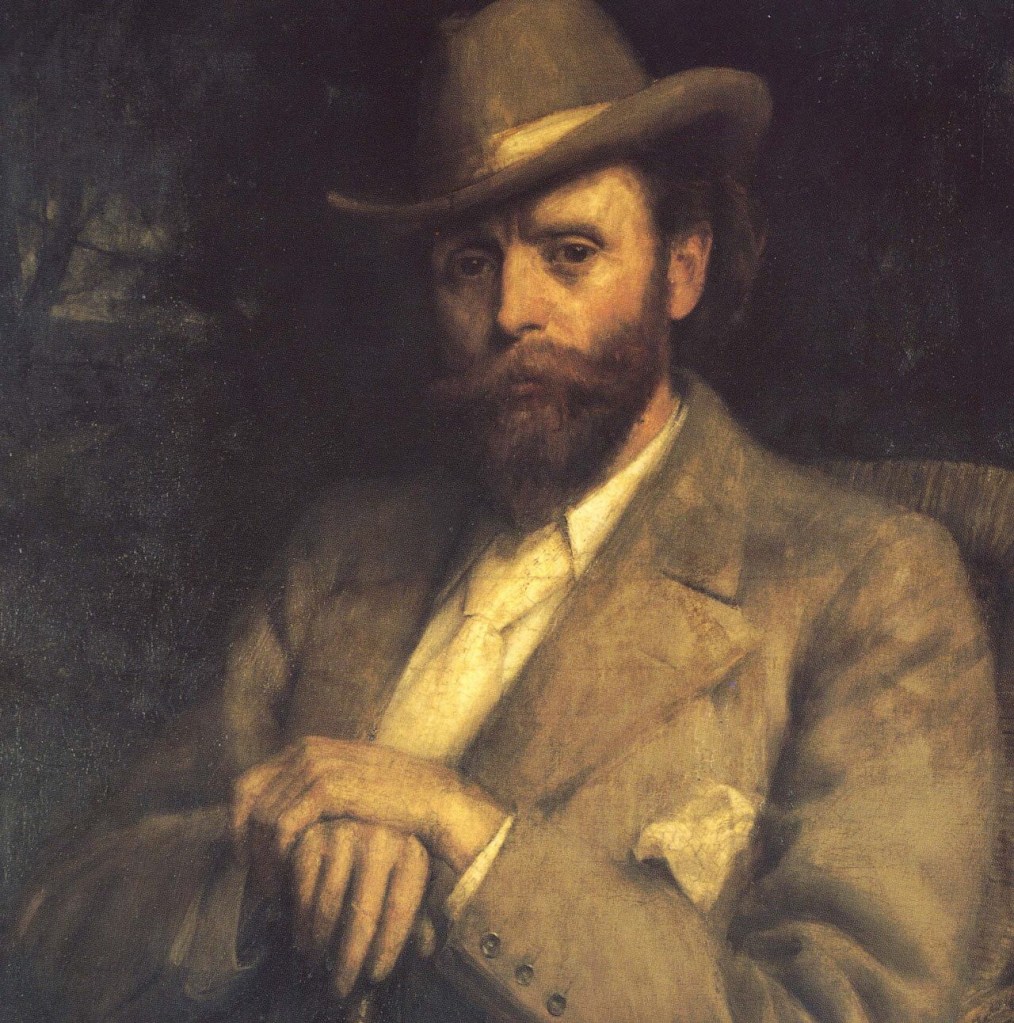On this day in history : 20th April 1912 – The death of Irish-born writer Bram Stoker, author of the 1897 gothic horror ‘Dracula’….

Born on the 8th of November 1847 in Clontarf, Dublin, Abraham (Bram) Stoker was the third of seven children and his father worked as a senior civil servant….
Bram was a sickly child and spent many of his early years bedridden and was not expected to live – although nobody seemed to know exactly what ailed him…. He would entertain himself by ‘people watching’ through his bedroom window and listening to the stories and legends of Irish history told to him by his mother…. No doubt these pass-times helped fuel his creative imagination….
By the age of seven Bram had recovered from his mystery illness and was able to start his formal education, attending a private school run by Reverend William Woods…. Despite his frailty during his early childhood Bram was to go on to thrive both physically and academically…. He grew into a tall strapping young man and after being admitted to Trinity College, Dublin, in 1864 he even excelled at sporting activities…. He was recognised as Dublin University’s Athletic Sports Champion in 1867 and played rugby for the University…. He was President of the University Philosophical Society and auditor of the College Historical Society…. He also became interested in the theatre….
After graduating Trinity with a Bachelor of Arts in 1870 Bram was then to go on to gain a Master of Arts in 1875…. He was to embark on a career path which followed in his father’s footsteps as a civil servant, taking a position at Dublin Castle…. He also took an unpaid role as theatre critic for the Dublin Evening Mail – and in December 1876 gave a favourable review for actor Henry Irving’s ‘Hamlet’ at the Theatre Royal, Dublin…. This review was to change Bram’s life…. Henry Irving was Bram’s idol – and he would no doubt have been delighted when he received an invitation to dinner from Irving…. The two were to become firm friends….

Bram had started to write seriously in his twenties; his story ‘Crystal Cup’ was published in 1872 by the London Society and he followed it up with his four-part ‘The Chain of Destiny’…. He also wrote a non-fiction book, ‘The Duties of Clerks of Petty Sessions in Ireland’, which was published in 1879….
In 1878 Bram married Florence Balcombe, who was a renowned beauty and had formerly been romantically linked to Oscar Wilde…. Bram counted Wilde amongst his friends having met him during his student days…. The friendship was tested as Wilde was initially upset that Florence had chosen Bram over him – but eventually differences were overcome and Bram and Wilde resumed their friendship….

Following their marriage the Stokers moved to London as Irving had invited Bram to manage his Lyceum Theatre – which Bram continued to do for the next 27 years (1878-1904)…. On the 31st of December 1879 Bram and Florence became parents to a son who they named ‘Irving Noel Thornley Stoker’ – he was to be their only child….
Inevitably Bram was to make many connections in his role as manager of the Lyceum…. He was to become well-known in theatrical circles and included amongst his friends and acquaintances people such as Sir Arthur Conan Doyle, Alfred Lord Tennyson, Buffalo Bill (Cody) and Mark Twain…. He was acquainted with William Gladstone, Theodore Roosevelt and Lord and Lady Randolph…. One of his closest friends was British novelist Sir Thomas Henry Hall Caine (usually known as Hall Caine) – Bram dedicated his masterpiece ‘Dracula’ to his friend….

Henry Irving received a Knighthood in 1895 – he was the first actor to be knighted…. Bram accompanied Irving on many of his tours, particularly America but also to other parts of the world…. However, surprisingly, he never visited Eastern Europe – the setting for his masterpiece novel…. He was to set two of his novels in America and further novels in the small Scottish village of Cruden Bay in Aberdeenshire – a place dear to him and where he would spend month long holidays…. It was here that he began to write ‘Dracula’ in 1895 – it is believed Dracula Castle may have been inspired by the nearby ‘Slains Castle’…. Further inspiration for the novel had already been received by a previous visit in 1890 to the North Yorkshire seaside town of Whitby (which had also provided inspiration for another of his novels ‘The Snake’s Pass’ in 1890)…. ‘Dracula’ was finally published on the 26th of May 1897….


The story of ‘Dracula’ involves Jonathan Harker, a solicitor, who when on a business trip stays at the Transylvanian Castle of Count Dracula…. Harker discovers that Dracula is a vampire and flees…. The Count follows him to England and begins to terrorise Whitby…. A group form, led by Abraham Van Helsing, to hunt Dracula down – which they eventually succeed to do and manage to kill him…. The book itself is written in the format of the diary entries and journals of the main characters….
Bram had met a Hungarian-Jewish writer, traveller and expert in Turkic languages and culture by the name of Armin Vambery…. Some say Vambery’s tales may have given Bram the idea for ‘Count Dracula’ – but there are others who dispute this…. Bram’s original idea as a title for his novel was ‘The Un-Dead’…. His Count was going to have been from Austria – and was to have been called ‘Wampyr’…. However, he found the name ‘Dracula’ whilst browsing in Whitby Library and thought it a more suitable name…. After its publication ‘Dracula’ was immediately well received – and has become one of the most successful literary works of all time…. Since publication it has never been out of print…. There have been several play versions of the novel and a film….

After a series of strokes Bram was to die at 26, St. George’s Square, his London home…. He was cremated and his ashes rest at Golders Green Crematorium, North West London…. An annual festival to honour the literary achievements of Bram Stoker is held in Dublin….












